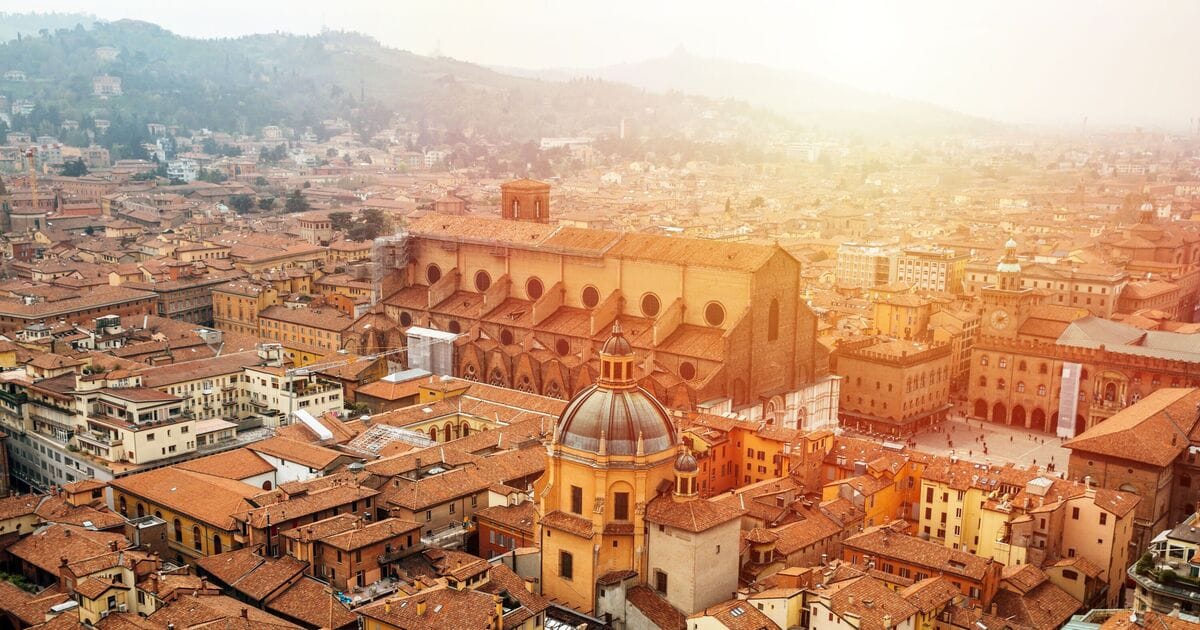Between the 12th and 13th centuries, just over 900 years ago, Bologna in northern Italy was a city full of towers, earning it the nickname of the “Manhattan of the Middle Ages”.
Almost all were tall, defensive stone towers, the highest being 97 metres.
The reasons for the construction of so many towers are not clear. One hypothesis is that the richest families used them for offensive or defensive purposes during the period of the Investiture Controversy – a conflict between church and state over the ability to choose and install clergy of monasteries and the pope himself.
In the 13th century, many of the towers were taken down or demolished and others simply collapsed.
The two most prominent ones remaining, known as the Two Towers (the Asinelli Tower, 97 metres, and the Garisenda Tower, 48 metres) are a landmark of the city.
Building a typical tower with a height of 60 metres in the Middle Ages was no easy task: it would have required between three and 10 years of work.
Each tower had a square cross-section with foundations between five and ten metres deep, reinforced by poles hammered into the ground and covered with pebbles and lime. The tower’s base was made of big blocks of selenite stone. The remaining walls became successively thinner and lighter the higher the structure was raised, and were realised in so-called “a sacco” masonry: with a thick inner wall and a thinner outer wall, with the gap being filled with stones and mortar.
Besides the towers, there are still some fortified gateways (“torresotti”) that correspond to the gates of the 12th-century city wall, which itself has almost been completely destroyed.
Many towers have subsequently been utilised in one way or another: as prison, city tower, shop or residential building.
Nevertheless, the towers remained a famous sight of Bologna throughout the centuries. Even Dante, the renowned Italian poet, writer and philosopher, mentioned some of the towers in his narrative poem Inferno, the first part of The Divine Comedy.
The last demolitions took place during the 20th century, according to an ambitious, but retrospectively unfortunate, restructuring plan for the city. The Artenisi Tower and the Riccadonna Tower at the Mercato di mezzo were demolished in 1917.
Among the towers still standing are the Azzoguidi Tower, also called Altabella (with a height of 61 metres), the Prendiparte Tower, called Coronata (60 metres) and the Scappi Tower (39 metres).
The first historian to study the towers of Bologna in a systematic way was Count Giovanni Gozzadini, a senator of the Italian kingdom in the 19th century, who looked at the city’s history intensively. His research suggested that there were as many as 180 towers, an enormous amount considering the size of resources of medieval Bologna.
However, more recent estimates reduced the number to between 80 and 100, and not all towers existed at the same time.
Nevertheless, this is still an impressive figure for the time. For context, New York City is now home to over 7,000 high-rise buildings that are at least 35 metres tall. The city’s first skyscraper was the Tower Building, which was built in 1889. The Empire State Building was completed in 1931.
Today, Bologna’s metropolitan area is home to more than one million people. It is the capital and largest city of the Emilia-Romagna region, the centre for automobile production including Ferrari and Maserati.
It is also famous for being the home to the oldest university in continuous operation, the University of Bologna, established in 1088 AD. In 2021, UNESCO recognised the lengthy porticoes – a porch leading to the entrance of a building – of the city as a World Heritage Site. They represent a symbol of the city together with the towers.





